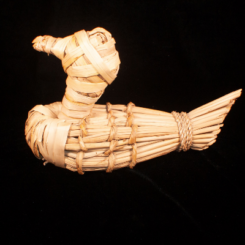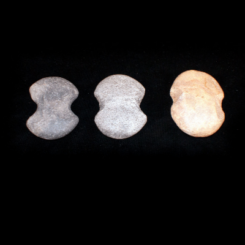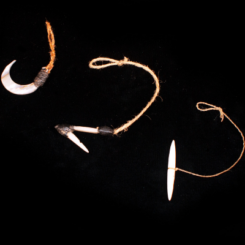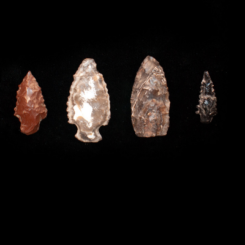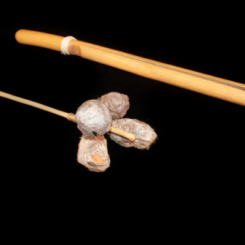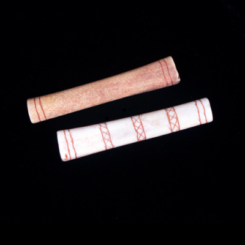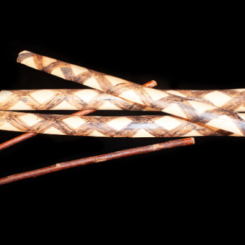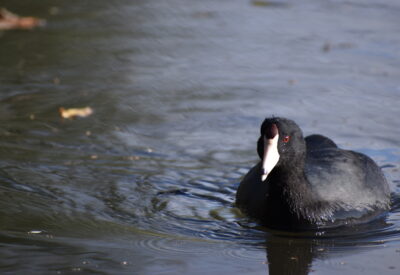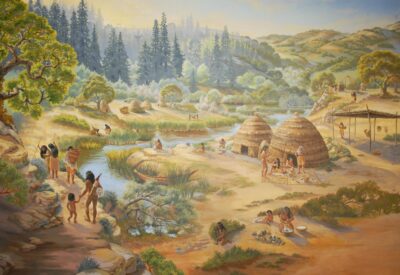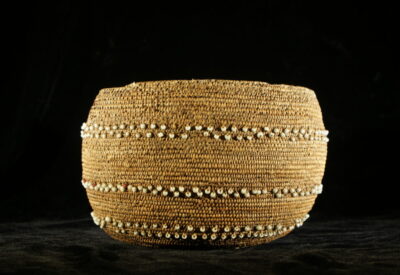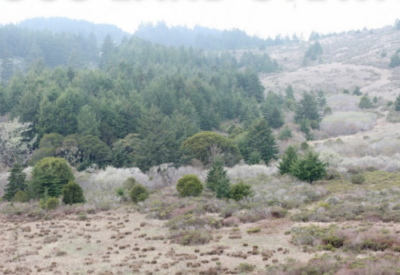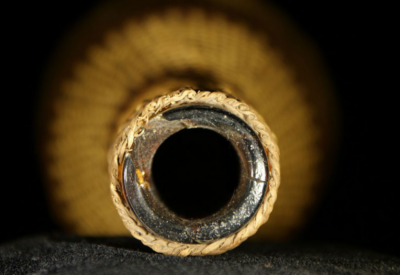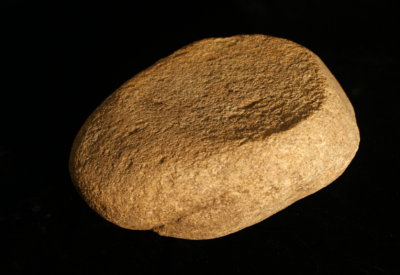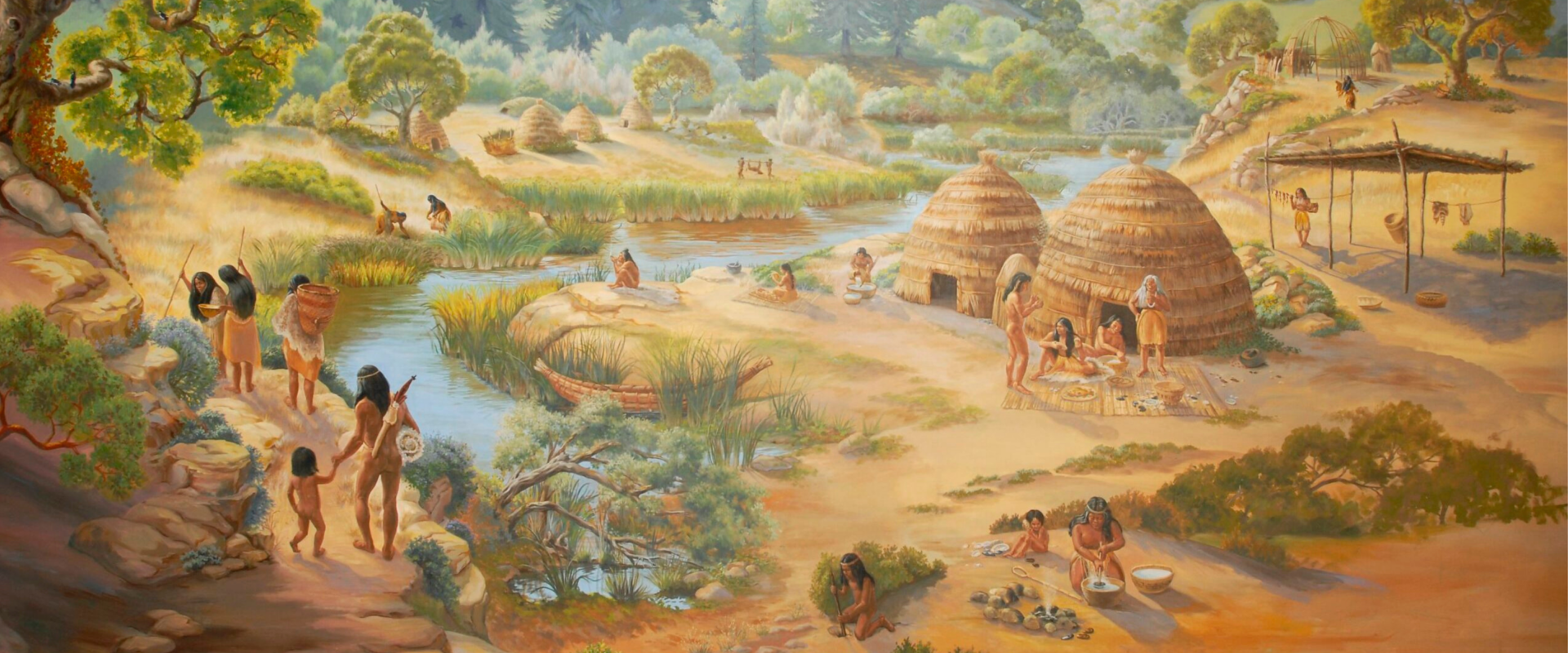
First Peoples of California
Book a Field TripPeople have lived in the Santa Cruz region for more than 10,000 years — since mammoths and mastodons roamed the land. In fact, one of the oldest known village sites in California is in nearby Scotts Valley. Today, as in the past, the environment of Santa Cruz offers a wealth of natural resources to support human life.


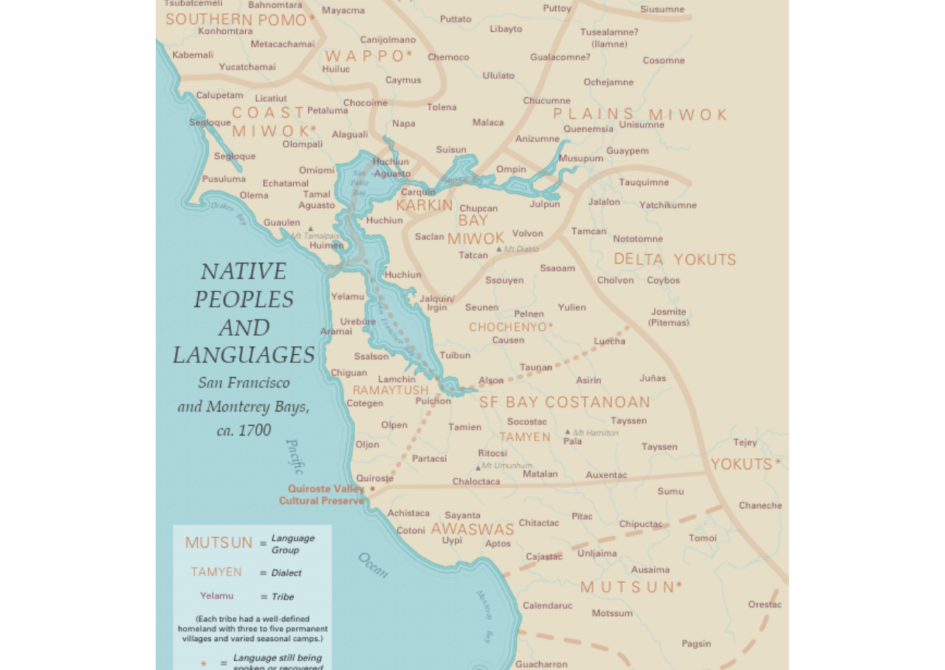
Many Languages and Dialects
Tribes living along the coast between San Francisco and Point Sur, and as far inland as the Central Valley, belong to the “Ohlone” language family — a term coined by anthropologists that includes at least eight languages and many additional dialects. The Indigenous people of Santa Cruz spoke the Awaswas language.
Today, many people use the term Ohlone to describe the cultures of the people along the Central Coast of California. Whenever possible, we will attribute artifacts and knowledge to their specific origins, recognizing that Indigenous culture is by no means homogeneous.


"Santa Cruz was called Aulinta in the Indian tongue. I will give you some words in their language: mancharas, women; ketchkema, boy; ciui, girl; atchsema, wife; housen, husband; maco, knife; chipay, ax; hatis, arrows; temo, bow; liti, come here; hai, sick; ena, dead; esu, hand; coro, feet; uir, head; hein, eyes; ochi, ear; uss, nose; hais, beard; summup, eyebrow; siit, teeth."
~Lorenzo Asisara, Born at Mission Santa Cruz, 1819

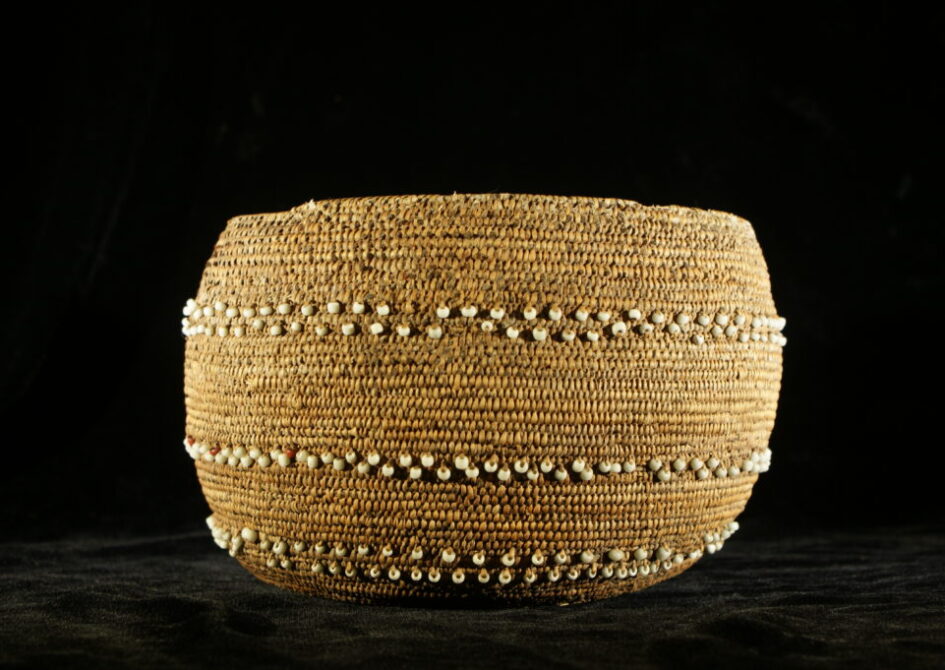
An Ohlone Basket
Because of its history, this basket offers us an opportunity to better understand early California, including the ways that the Missions impacted traditional domestic practices and the made-for-sale basketry trade. It also provides us a chance to better understand the role of Indigenous women and their work in native life, both prior, during and post-Mission era. And while many may think that basketry is a relic of the past, it is also still very much a living, vibrant practice carried out by today’s Native communities throughout the state and the country. This basket serves as a wonderful connection between the present and past, and is an invaluable reminder of the culture and history contained within it.


"I’ve been working for several years trying to find out about our baskets — what they looked like, where they are, what materials were used. There are so few Ohlone baskets left that it’s been quite a job learning these things, but little by little, the pieces have been coming together. With the help of friends who helped me learn how to gather and prepare the materials, I was eventually able to begin weaving — the first Ohlone basket to be made in nearly a hundred years!"
~Linda Yamane, Rumsien Ohlone

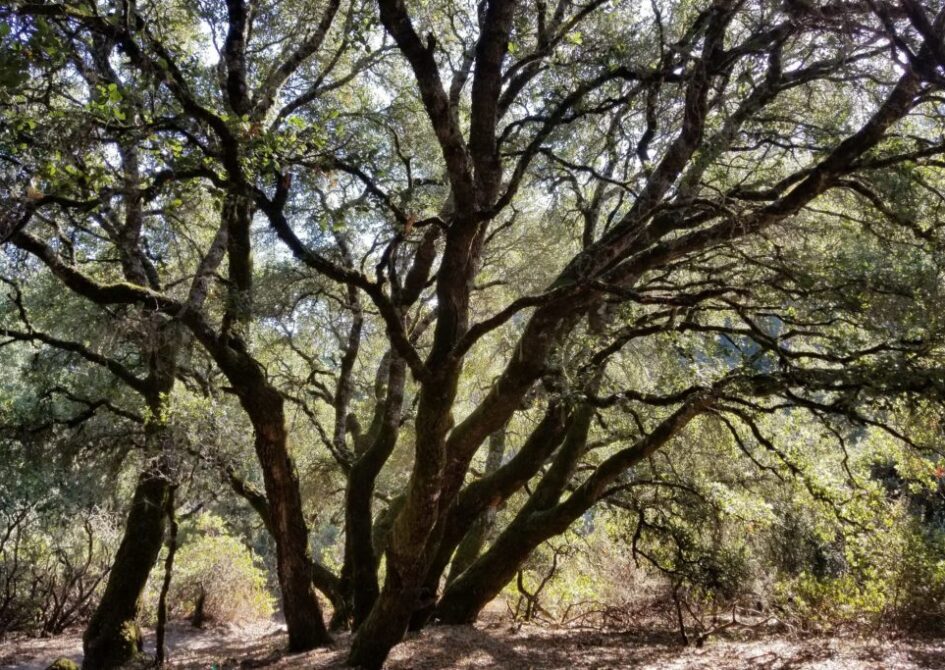
Tending the Landscape
Tending to nature is an important aspect of Native culture. Not only is managing resources vital for survival, but it is also central to spiritual and cultural practices. Before contact with Spaniards, California Natives actively tended the landscape to meet their needs. They also followed the seasonal cycles of the natural world around them.
Making Acorn Mush and Bread
Acorns were used for soups or breads, but required careful processing to remove tannic acid in their pulp. After grinding and sifting, the resulting flour had to be rinsed with water in a leaf-lined sand basin or specialized basket. Acorns were a staple food for people throughout California, including the Awaswas-speaking people of Santa Cruz. Each fall they were collected and stored for year-round use in granaries that kept them dry and safe from pests.


"They had acorns to eat which they ground in stone mortars, called urswan. The pestle was called packshan. To cook the acorn after being ground, the mass was put into large baskets, which were made watertight, being woven with grass roots of a kind very long and tough. Into these were put hot stones, which caused the water to boil, and so the meal was cooked."
~Lorenzo Asisara, Born at Mission Santa Cruz, 1819

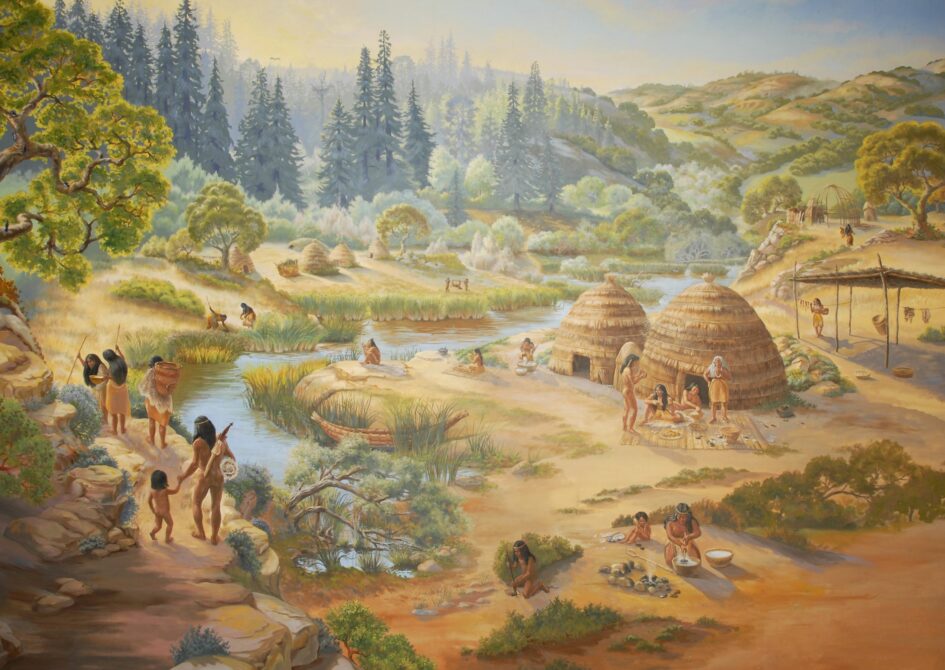
Nature's Bounty
Consider the things that all humans need to survive. Native people were able to survive and thrive because of the abundance of this region and their expertise in engaging with it. Cultural teachings and significant knowledge about flora, fauna, and natural cycles of life along the coast were and are passed down over generations through oral traditions. Villages were usually located near fresh water and seasonal food sources, and tribes would often move to different sites throughout the year. Native people in this region cultivated and utilized plants with a deep knowledge of their needs and traits. Plants were specifically tended for use in basketry, building, food, medicine, and religious ceremonies.
What do you notice in the image? What are the people doing? What materials are they using?
The People of Santa Cruz © Ann Elizabeth Thiermann



Rich in Resources
Natural resources were used for more than survival – they served a purpose in ceremony, currency, expression, recreation, and daily household needs. Hunting provided the community with many resources in addition to food, including supplies for for clothing, tools, crafting, and ceremony.
Tools
Tools such as bone and shell hooks, traps, nets, and decoys were used to hunt a variety of game. Resources to create these tools were carefully cultivated or traded for, as in the case of chert, and later obsidian, for arrow and spear points.
Bows and Arrows
Bows were made from flexible and strong wood, reinforced by sinew. Several types of trees were carefully tended with fire and pruning to encourage the growth of straight branches for arrows. Hunters used spears, which were later replaced by more accurate bows and arrows.




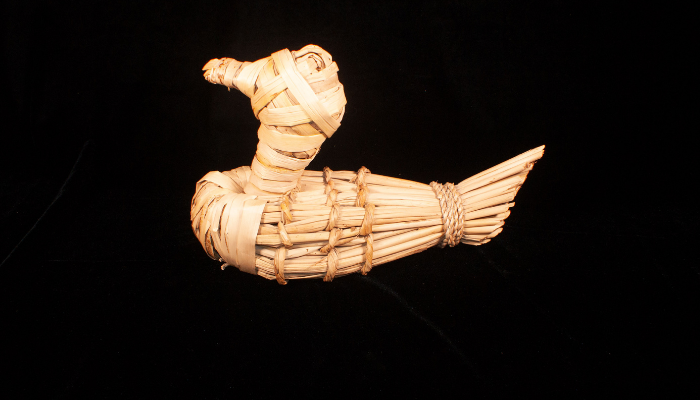
Decoy duck for hunting made of tule (reproduction).
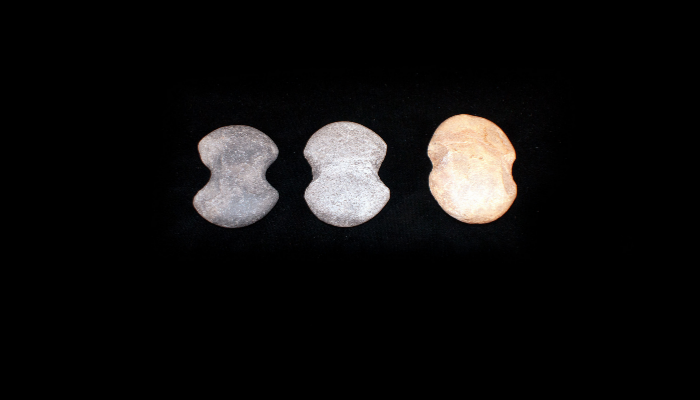
Stone net weights for fishing (Uypi)
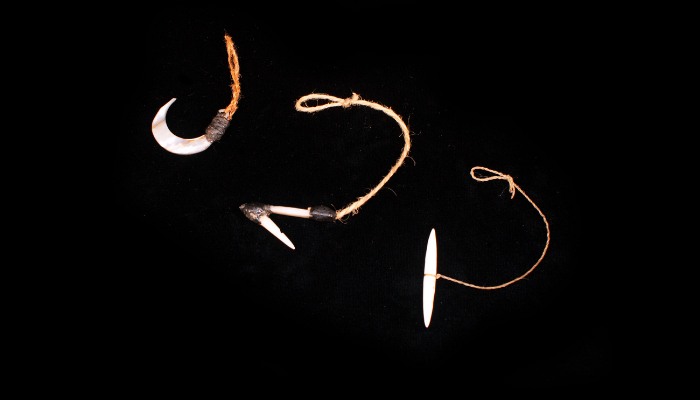
Fishing hooks made with shell (reproductions).
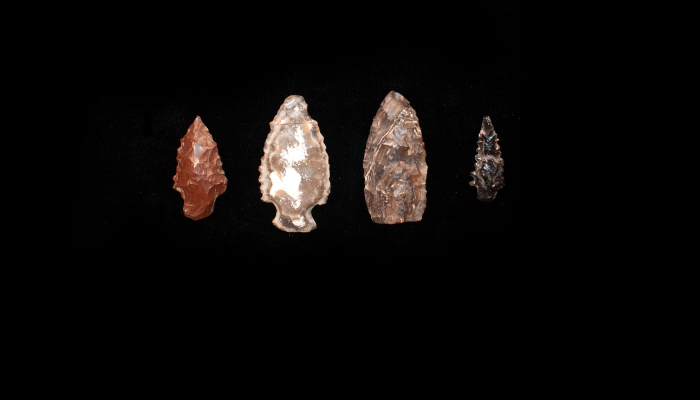
Red Franciscan chert stone point (Aptos), chert stone points (Uypi), and obsidian stone point (Uypi).
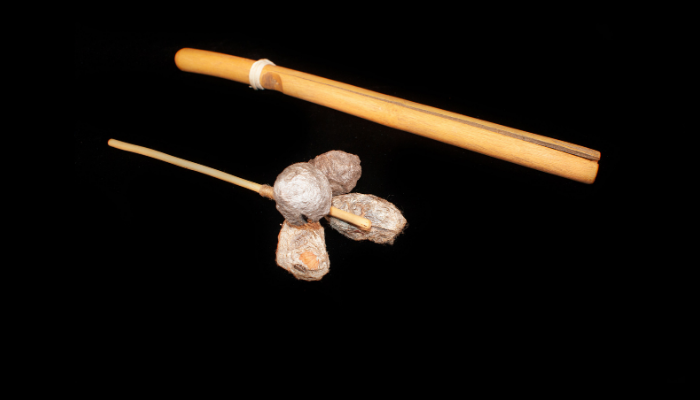
Elderberry clapper stick and cocoon rattle instruments (reproductions)
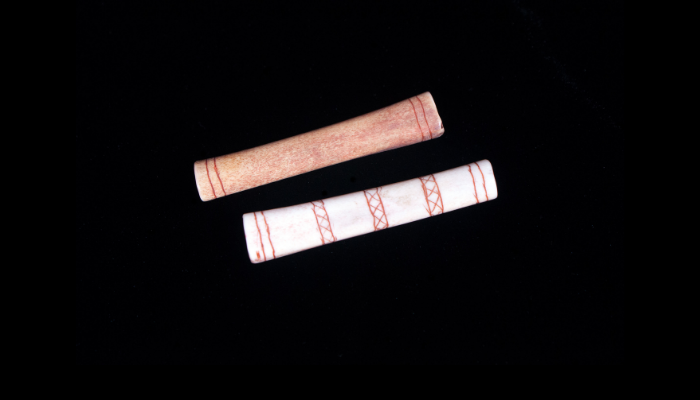
Tussi game pieces (reproductions).
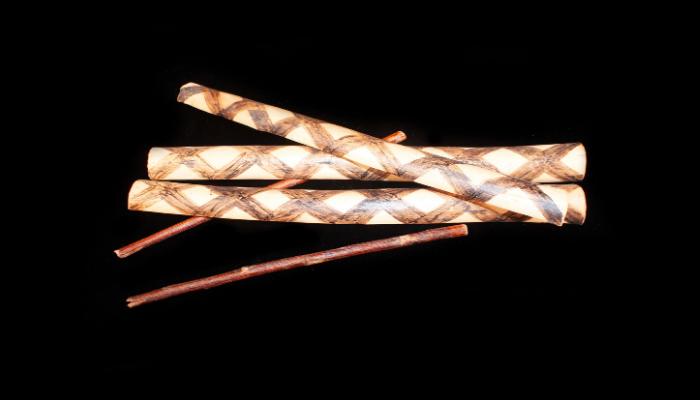
Trallik “Stave” game pieces (reproductions)
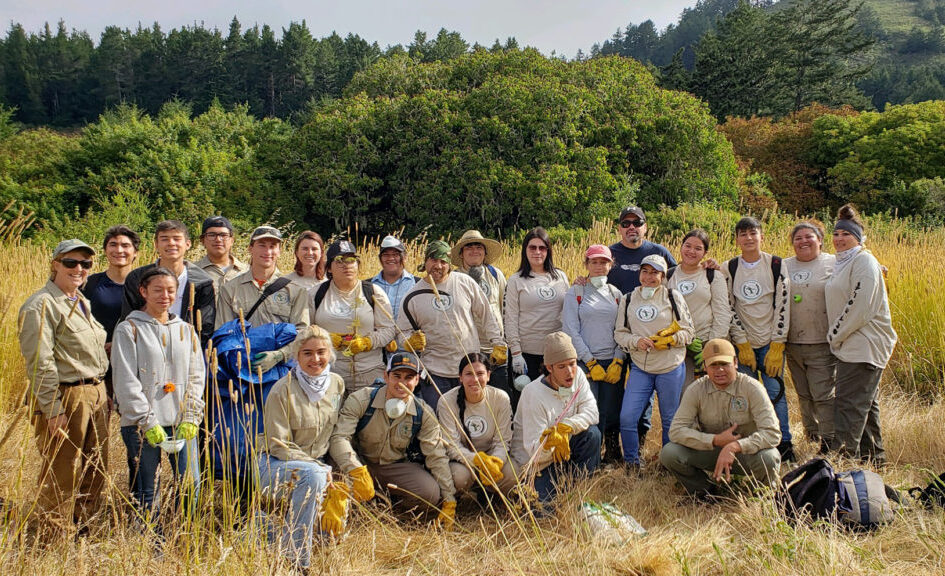
The Amah Mutsun Tribal Band
Stewardship TodayTraditional stewardship of natural and cultural resources was brutally disrupted by the establishment of the Spanish Missions in the late 18th century, followed by Mexican ranchos, and as California became a state in 1850. This was devastating to the Native people and the landscapes they tended. Today, the Amah Mutsun Tribal Band is comprised of the descendants of the indigenous people taken to missions San Juan Bautista and Santa Cruz.
Despite three continuous periods of colonization, the Amah Mutsun Tribal Band are now committed to restoring traditional knowledge, celebrating their heritage, honoring their Creator and protecting their ancestral homeland. In 2014 the tribe established the Amah Mutsun Land Trust to serve as a vehicle for the tribe’s return to their ancestral land and stewardship.


"The Amah Mutsun never surrendered or signed away our rights to our land, water, or other resources. In 2006 Tribal Elders reminded Tribal Council that our creation story tells us us we must take care of Mother Earth and all living things. Since that time, our tribe has worked hard to return to the path of our ancestors. It is our responsibility to complete their journey, which was brutally disrupted by colonization. This is necessary because we must honor our ancestors and fulfill our obligation to Creator."
~Valentin Lopez, Chairman of Amah Mutsun Tribal Band

Resources for Learning More




Please Note:
Recent changes in federal law require museums to have explicit permission to display Indigenous cultural objects. The Museum applauds this change, and has been working towards outreach to the different communities historically represented by our displays. The items that remain on display in our physical and online exhibit are either reproductions, or are local materials that we display with permission and consultation from the Amah Mutsun Tribal Band.























